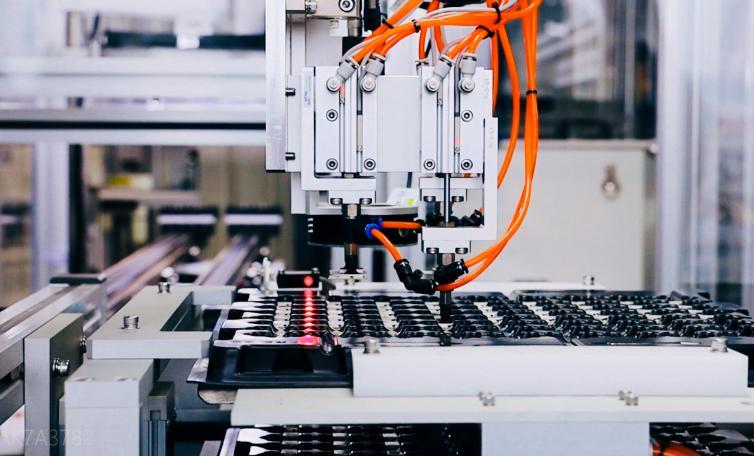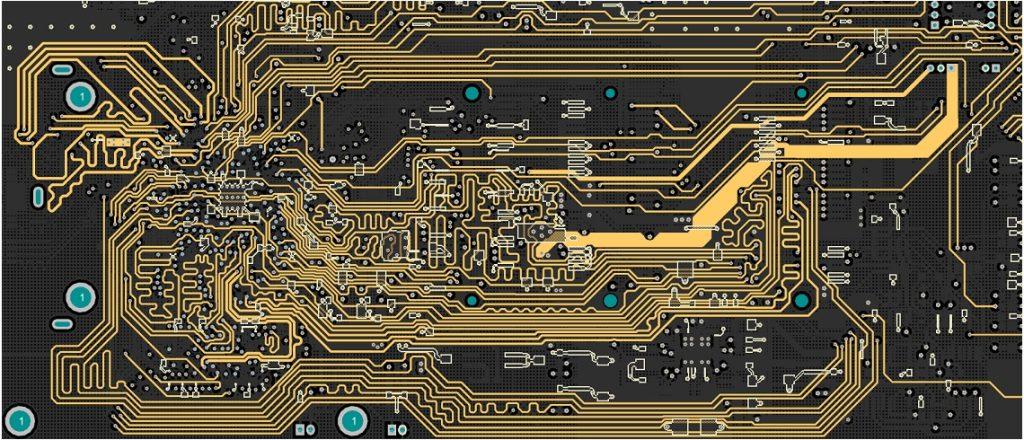A rigid-flexible printed circuit board (PCB) is a special type of PCB that combines the rigidity of a traditional rigid PCB with the flexibility of a flexible PCB. These hybrid PCBs combine the advantages of both types of PCBs and have been used in many industries. This article will discuss the main applications of rigid-flexible PCBs in various industries and how different packaging technologies are used in these applications.
Aerospace and Defense Industries
The aerospace and defense industry requires high-performance, reliable, compact electronic devices. The industry uses rigid-flex PCBs to meet these requirements, which provide a compact and lightweight solution for harsh environments. The flexible areas of the PCB can be shaped and bent to fit into tight spaces and provide a solid connection to components. The rigid areas provide structural support for the board and enhance its mechanical strength. This combination of flexibility and rigidity makes rigid-flexible PCBs ideal for applications such as avionics, space systems, and military electronics.
The most common rigid-flex PCB packaging technology used in the aerospace and defense industries is surface mount technology (SMT). SMT allows components to be placed on both sides of the PCB, which increases component density and reduces the device’s overall size. In addition, SMT provides improved thermal management and reduces the risk of mechanical failure, making it ideal for harsh environments.
Medical Industry
The medical industry requires high-performance, reliable, and compact electronic devices designed to be safe and effective for patients. The industry uses a combination of rigid and flexible PCBs to meet these requirements, providing a compact and lightweight solution ideal for medical devices. The flexible areas of the PCB can be deformed and bent to fit into tight spaces, while the rigid areas provide structural support for the board and enhance its mechanical strength. This combination of flexibility and rigidity makes rigid-flex PCBs ideal for applications such as implantable medical devices, wearable devices, and diagnostic devices.
The medical industry’s most common rigid-flex PCB packaging technology is chip-on-flex (COF). COF involves placing the component directly on the flexible portion of the PCB, which provides a more compact solution than other packaging technologies. In addition, COF provides improved thermal management and reduces the risk of mechanical failure, making it ideal for medical devices.
Automotive Industry
The automotive industry requires high-performance, reliable, compact electronics that withstand harsh environments. The industry uses a combination of rigid and flexible PCBs to meet these requirements, providing a compact and lightweight solution ideal for automotive electronics. The flexible areas of the PCB can deform and bend to fit into tight spaces, while the rigid areas provide structural support for the board and enhance its mechanical strength. This combination of flexibility and rigidity makes rigid-flex PCBs ideal for automotive lighting, in-car entertainment, and security systems.
The most common rigid-flexible PCB packaging technology used in the automotive industry is the ball grid array (BGA). BGA is a surface mount technology that involves placing components on the bottom of the PCB. BGAs offer a compact solution and improved thermal management, making them ideal for harsh environments such as automotive.
Consumer Electronics Industry
The consumer electronics industry requires high-performance, reliable, and compact electronic devices designed for consumer use. The industry uses a combination of rigid and flexible PCBs to meet these requirements, which provide a compact and lightweight solution ideal for consumer electronics. The flexible areas of the PCB can be deformed and bent to fit into tight spaces. The total area of the PCB can be increased for the same line density, relatively increasing circuit capacity and reducing signal transmission limits and contact assembly error rates. On the other hand, the combination of the rigid and soft board is light and thin and can be bent wiring, so it has a substantial help to reduce the size and weight.
This article summarizes the most common applications of rigid-flexible PCBs and separately summarizes the differences between the packaging technologies used in each industry of rigid-flexible PCBs.
ANPLLO is an international, professional, and reliable manufacturer of flex-rigid PCBs with two production sites. Our production follows a strict quality system and is certified to ISO9001, ISO14001, ISO13485, TS16949, and C-UL-S. All products strictly follow the accepted standards of IPC-A-600-H and IPC-6012.


